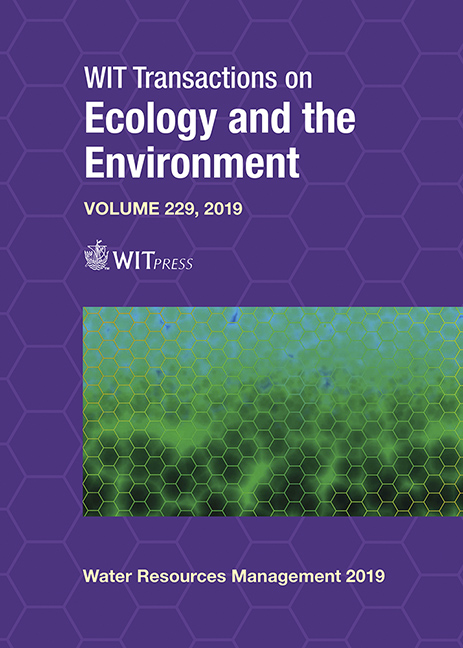STUDY OF THE CLOGGING PROCESS IN A SEMI-ARID REGION: WADI EL HIMMER, MOROCCO
Price
Free (open access)
Transaction
Volume
229
Pages
8
Page Range
151 - 158
Published
2019
Paper DOI
10.2495/WRM190151
Copyright
WIT Press
Author(s)
MOHAMMED ZAIDI, NASRE-DINE AHFIR, ABDELLAH ALEM, BOUABID EL MANSOURI, HUAQING WANG
Abstract
In semi-arid regions, managed aquifer recharge (MAR) is seen as an efficient solution among others for protecting groundwater resources. Clogging is one of the major issues that can reduce the durability of recharge facilities. As a consequence of clogging of soils by suspended matter, permeability, and porosity, and therefore exchange between surface water and groundwater are reduced. To our knowledge, few researchers have studied the mechanism of clogging of the MAR in a semi-arid region according to hydrologic conditions of the field. The main objective of the present work is to study the clogging process of recharge sites in a semi-arid region (Wadi El Himmer, Morocco). These recharge sites consist of a “Percolation Tank” and “Recharge Releases”, which retard and distribute the flow to facilitate infiltration into a saturated zone. Field measurements are conducted to quantify the thickness of the surface deposits (cake) according to precipitation at different recharge sites. To realize these measurements, wooden pickets were implanted at different locations of the recharge sites. After 12 weeks of exposure to hydro-meteorological conditions, the thickness of the deposited (suspended matter) layer was measured on each picket. In order to facilitate the interpretation of results, the kriging method was used to interpolate obtained measurements. A significant variation in cake thickness was observed at each recharge site following the flow direction. The layer deposited is mainly dominated by red clays and silts. These results prompted us to investigate the impact of these deposits on the deep clogging.
Keywords
semi-arid region, managed aquifer recharge, clogging, Wadi El Himmer (Morocco)





